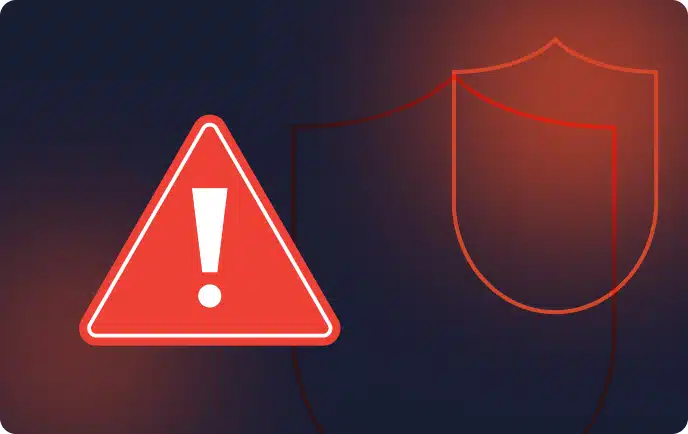What Is Unauthorized Access?
Unauthorized access is the process of gaining entry or access to a system, physical or electronic, without the permission of the owner or administrator. Such access can be obtained by bypassing security measures, exploiting system vulnerabilities or by using stolen credentials. Unauthorized access is a serious violation of privacy laws and can lead to severe consequences, including legal action.
In cybersecurity, unauthorized access refers to the breach of computer systems, networks or databases. These breaches generally involve hackers infiltrating the system to steal, alter, or destroy information. However, it’s important to note that unauthorized access isn’t limited to attacks by external hackers. It can also include an employee accessing files or information outside their level of authorization.
The increasingly prevalent threat of unauthorized access raises significant concerns about data security, privacy, and the integrity of digital systems. It poses a significant risk to individuals, corporations, and governments alike.
This is part of an extensive series of guides about access management.
The Risks and Consequences of Unauthorized Access
Theft or Destruction of Private Data
When unauthorized individuals gain access to a system, they often target sensitive data such as financial records, personal identification information, trade secrets, or intellectual property. This intrusion can result in substantial financial loss, damage to a company’s reputation, and potential legal repercussions.
Additionally, in certain instances, the intruder may not only steal data but also corrupt, destroy, or encrypt it. This act of sabotage can cause catastrophic damage, particularly for businesses that rely heavily on their data. From crippling a business operation to causing a significant loss of trust among clients and customers, the impact of such instances can be devastating.
Moreover, the theft or destruction of personal information can have severe implications for individuals as well. From identity theft to financial fraud, the personal consequences can be long-lasting and difficult to recover from.
Theft of Money or Goods via Fraudulent Activity
Another major risk associated with unauthorized access is the potential for fraud. With access to sensitive data, cybercriminals can carry out a variety of fraudulent activities. These may include credit card fraud, manipulation of bank accounts, or even setting up fake businesses.
Unauthorized access enables criminals to commit these acts of fraud by providing them with the necessary information or access to financial resources. For instance, they could use stolen credit card information to make illegitimate purchases, or manipulate banking systems to divert funds illicitly.
Sabotage or Defacing of Organizational Systems
In some cases, unauthorized access might be used to sabotage organizational systems or deface websites. This could involve disrupting the functioning of a network, injecting malicious code into a website or even taking control of a system, causing widespread chaos and disruption.
These actions can inflict significant damage on businesses. Not only can they result in financial losses, but they can also ruin a company’s reputation, leading to a loss of trust among clients and customers.
Physical Damages
While it may be less common, unauthorized access can also lead to physical damages. For instance, if a hacker gains control over an industrial control system, they could cause machinery to malfunction, leading to potential accidents or damage to equipment.
This risk is particularly acute in industries such as manufacturing, energy, or transportation, where the malfunction of machinery could lead to significant safety hazards. It underscores the importance of robust security measures not just for protecting data, but also for ensuring the physical safety of workers and infrastructure.
Learn more in our detailed guide to broken access control (coming soon)
How Does Unauthorized Access Occur? Common Examples
Poorly Implemented Authentication
One of the most common ways unauthorized access occurs is through poorly implemented authentication processes. Authentication is a security measure used to verify the identity of a person or device attempting to access a system. If the authentication process is poorly designed or implemented, or misconfigured, it becomes easy for unauthorized individuals to bypass it and gain access to the system.
Take, for example, a situation where a system does not lock a user out after a certain number of failed login attempts, it leaves the door open for a brute force attack, where an attacker tries different combinations of passwords until they find the correct one.
Another example of poorly implemented authentication is where a system does not enforce regular password changes. In such a situation, an unauthorized person who manages to obtain a valid password can continue to use it for an extended period without being detected.
Learn more in our detailed guide to broken authentication (coming soon)
Phishing Attacks
One of the most common ways unauthorized access occurs is through phishing attacks. This involves sending deceptive emails or messages that trick recipients into revealing their login credentials or clicking on malicious links. Once the recipient takes the bait, the attacker can gain access to their accounts or infect their systems with malware.
Phishing attacks are particularly effective because they prey on human vulnerabilities rather than technological ones. By posing as a trustworthy entity, attackers can manipulate individuals into unwittingly granting them access. This highlights the importance of cybersecurity awareness and training as a key defense against unauthorized access.
Password Attacks
Another common method used to gain unauthorized access is password attacks. This involves trying to guess or crack a user’s password using various techniques. These may include brute force attacks, where every possible password combination is tried, or dictionary attacks, where common words or phrases are used.
Password attacks underscore the importance of strong, unique passwords as a fundamental layer of security. Using a combination of letters, numbers, and symbols, and avoiding common words or phrases can make it more difficult for attackers to guess your password.
Exploiting Software Vulnerabilities
Unauthorized access can also occur by exploiting software vulnerabilities. These are flaws or weaknesses in a software program that can be exploited to gain unauthorized access or perform other malicious actions.
Software vulnerabilities can occur for various reasons, such as coding errors or outdated software. Attackers often use these vulnerabilities to infiltrate systems, highlighting the importance of regular software updates and patches as a key part of cybersecurity.
Insider Threats
Another common source of unauthorized access is insider threats. Insider threats refer to security threats that originate from within the organization, often from employees, former employees, contractors or business associates who have legitimate access to the organization’s networks, systems or data.
Insider threats can be intentional or unintentional. An intentional insider threat occurs when an individual with legitimate access deliberately misuses it to harm the organization. This could be for reasons such as espionage, personal gain, or revenge. An unintentional insider threat, on the other hand, occurs when an individual inadvertently causes a security breach, often through negligence or lack of awareness.
6 Ways to Prevent Unauthorized Access
Preventing unauthorized access requires a comprehensive approach that combines several strategies. Below are some best practices that can help keep your systems secure.
1. Strong Password Policy
One of the most basic yet effective ways to prevent unauthorized access is by implementing a strong password policy. This involves requiring users to create complex passwords that are hard to guess and enforcing regular password changes.
A strong password should be at least eight characters long and include a mix of upper and lower case letters, numbers, and special characters. It should also not contain easily guessable information such as the user’s name, birth date, or common words.
2. Two Factor Authentication and Multi Factor Authentication
Another effective strategy is the use of two-factor authentication (2FA) and multi-factor authentication (MFA). 2FA requires users to provide two different types of identification to access a system. This could be, for example, a password and a code sent to the user’s mobile phone.
MFA, on the other hand, involves the use of three or more factors of authentication. These could include something the user knows (e.g., a password), something the user has (e.g., a security token), and something the user is (e.g., a fingerprint).
3. Monitoring User Activity
Monitoring user activity is another important strategy in preventing unauthorized access. This involves keeping track of what users are doing on your systems and networks, and looking out for any unusual activity.
By monitoring user activity, you can quickly detect any potential security breaches and take necessary action before any serious damage is done. For example, if you notice a user attempting to access sensitive data they don’t normally need for their job, it could be an indication of a potential security breach.
4. Implement Endpoint Security
Endpoint security is a strategy that focuses on securing each endpoint, or user device, on a network in order to prevent unauthorized access. This can include laptops, desktops, mobile phones, tablets, and any other devices that connect to your network.
Endpoint security measures can include next-generation antivirus (NGAV) software, firewalls, and intrusion detection systems. They can also include policies that restrict the use of removable media, such as USB drives, which can be used to introduce malware or steal data.
5. Regular Software Updates and Patch Management
Regularly updating software and managing patches is another crucial strategy in preventing unauthorized access. Software updates often include security improvements that fix vulnerabilities that could be exploited by attackers.
By regularly updating your software and managing patches, you can ensure that your systems are protected against known vulnerabilities. This can significantly reduce your risk of falling victim to unauthorized access.
6. Using Dynamic Application Security Testing (DAST)
Dynamic Application Security Testing (DAST) is a proactive approach to prevent unauthorized access in web applications. DAST operates by simulating cyber-attacks from an external viewpoint. It actively tests a running application, mimicking the actions of potential attackers. This approach is effective in identifying real-world vulnerabilities that could be exploited for unauthorized access, such as SQL injection, cross-site scripting, and other common threats.
During its operation, DAST tools crawl through the web application, identifying all accessible endpoints. By doing so, it uncovers points in the application that are exposed to the internet and could potentially be targeted by attackers to gain unauthorized entry.
See Additional Guides on Key Access Management Topics
Together with our content partners, we have authored in-depth guides on several other topics that can also be useful as you explore the world of access management
Network Topology Mapping
Authored by Faddom
- Network Topology Mapping: Types and Tools
- Micro Segmentation & Network Microsegmentation Beginners Guide
- Network Address Translation (NAT) Introduction
RBAC
Authored by Frontegg
- What Is Role-Based Access Control (RBAC)? A Complete Guide
- Role Based Access Control Best Practices You Must Know
- RBAC in Azure: A Practical Guide
SSO
Authored by Frontegg
- How Does Single Sign-On (SSO) Work?
- AWS SSO: Concepts, Features, and a Quick Tutorial
- Okta SSO: Features, Pricing, and Integration




